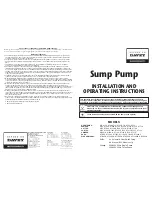
Applications Manual Bosch Geothermal Heat Pumps
| 17
Bosch Thermotechnology Corp.
Data subject to change
4.6 Bosch Geothermal Heat Pump
Equipment Sizing
There is nothing more important than an accurate
load estimate, or load calculation, for a successful
Bosch geothermal heat pump system (water-to-air or
water-to-water). This is the most important step in the
design process. These load calculations must always
be performed with a comprehensive industry-accepted
load calculation procedure, either manually, or with a
recognized software program. Proper load calculations are
critical and may even reveal if the particular installation
could bene t from an integrated system.
The sizing of the circulation pumps, the distribution
system and the ground heat exchanger, or “ground loop”
are all derived directly from the sizing of the Bosch
geothermal heat pump equipment. Overestimating the
heat loss or heat gain means over-sizing the system. The
extra cost of the oversized system is unnecessary. In fact,
it may result in the selection of a different type of system.
If an oversized system is installed, it may be inef cient and
uncomfortable. If the system is undersized it will not do an
adequate job of heating and/or cooling the home.
The most important rst step in the design of a
geothermal heat pump installation is an accurate
load calculation of the structure’s heat loss and
heat gain.
Additionally, the related energy consumption pro le and
the domestic hot water requirements are important as
well. This load calculation of the cooling and heating loads
on a residential structure is used in determining the size
of geothermal heat pump equipment required to maintain
comfortable indoor air conditions. This load calculation
will also allow accurate sizing of the Bosch geothermal
heat pump system associated ground heat exchanger, or
“ground loop”. This is very important because the capital
cost of a Bosch geothermal heat pump system is generally
higher than for other conventional systems and economies
of scale are more limited.
There are multiple load calculation procedures available in
the HVAC/R industry. There are also computer programs
and procedures that accompany most all of them. Some of
the accepted calculation methods are available from ACCA
(Air Conditioning Contractors of America), HRAI (Heating,
Refrigeration and Air Conditioning Institute of Canada) and
ASHRAE (American Society of Heating Refrigeration and
Air Conditioning Engineers).
Today, in the HVAC/R industry, ACCA offers the Manual
J® Residential Load Calculation (8th Edition) procedure
(Fig.16). This is the full version and is the of cial standard
for residential load calculations, and is required by many
building codes around the country for calculating heating
or cooling loads for residential applications. Most other
methods follow the concepts of Manual J. This method is
used widely by contractors, and is the only load calculation
procedure currently approved by the American National
Standards Institute (ANSI). Either a whole house or room-
by-room load calculation may be used for equipment
sizing, but a room-by-room load calculation should always
be used for duct sizing.
Fig. 16 Residential load calculation literature
ACCA also released an abridged version of the eighth
edition of Manual J entitled Manual J Abridged Edition
(MJ8-AE), which provides complete instructions for
estimating heat loss and heat gain for single-family, single-
zone residential structures (Fig.17). MJ8-AE is suf cient
for learning the Manual J procedures and undertaking
load calculations on a variety of home applications. It is
considered representative of MJ8 and simpler to use.
Over-sizing a Bosch geothermal heat pump system will
signi cantly increase installation cost for little operational
savings and will increase operation under part load.
Frequent cycling can occur reducing equipment life
and operating ef ciency. Conversely if the system is
undersized, design conditions may not be met and the
use of other heating sources such as electric heating will
reduce the overall system ef ciency.
Fig. 17 Residential load calculation literature
















































